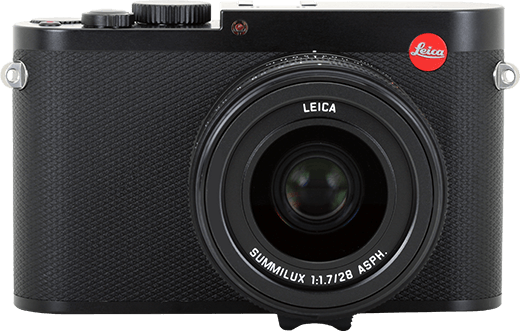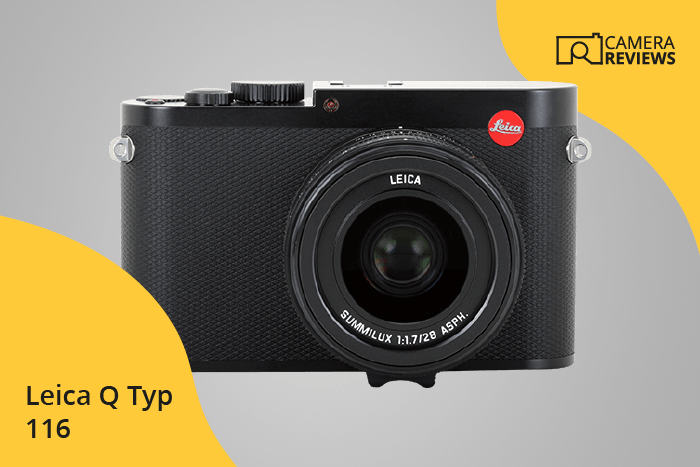Leica Q Typ 116 Specs and Scores

The Leica Q Typ 116 compact camera earns a score of 64/100. Announced on June 10, 2015, this camera hit the market with a launch price of $4250. With dimensions of 130 x 80 x 93mm and a weight of 640g (1.41lbs), the Leica Q Typ 116’s specifications are still competitive in today’s market. Although it has been a few years since its release, this camera maintains its position as a reliable option for photography enthusiasts.
Leica Q Typ 116 Overview and Optics
The Leica Q Typ 116 receives a score of 72/100 for its optics. This camera features a 24.2-megapixel CMOS sensor with a shooting speed of 10 frames per second. The Maestro II processor powers the camera, and it has a DXOMARK score of 85 for its sensor performance. A full-frame sensor size contributes to the image quality, and the camera has an aspect ratio of 3:2.
However, the Leica Q Typ 116 uses a fixed lens mount, meaning the lens cannot be changed. This may limit its versatility compared to other cameras in the market. Additionally, there is no image stabilization, which could affect image sharpness in certain shooting conditions.
Despite these limitations, the Leica Q Typ 116 still offers solid performance in terms of optics. Its score of 72/100 reflects the quality of its sensor, processor, and overall image quality.
Leica Q Typ 116 Video Performance
The Leica Q Typ 116 receives a video score of 70 out of 100. This camera offers Full HD video resolution with 1920 x 1080 pixels and a maximum frame rate of 60 frames per second. Additionally, the device includes a time-lapse functionality.
Comparing the Leica Q Typ 116’s video capabilities to other options in the market, it falls short of the 4K resolution that many contemporary cameras now offer. However, its Full HD resolution still provides decent quality for casual users and hobbyists. The 60fps frame rate ensures smooth video playback, while the time-lapse feature adds versatility to the camera’s functions.
Although the Leica Q Typ 116 does not boast the highest video specifications on the market, it remains a solid choice for those seeking a reliable camera with satisfactory video performance.
Leica Q Typ 116 Features and Benefits
The Leica Q Typ 116 features a score of 57/100, which reflects its capabilities in terms of specifications. With a 3-inch screen size and a resolution of 1040000 dots, this camera offers a decent display for users. The presence of a touchscreen enhances the user experience, allowing for easy navigation and control.
However, the Leica Q Typ 116 lacks some modern features that are common in today’s market. The absence of a flip screen, GPS, WIFI, and Bluetooth limits its versatility and connectivity options. These omissions may influence the buying decision of potential users who seek advanced features in a camera.
Taking these factors into account, the Leica Q Typ 116 has a mix of reliable features and limitations. While it may not be the top choice for users seeking cutting-edge technology, it remains a solid option for those who value simplicity and the Leica brand.
Leica Q Typ 116 Storage and Battery
The Leica Q Typ 116 receives a storage and battery score of 16/100. It has a single memory card slot, accepting SD, SDHC, and SDXC cards. With a battery life of 300 shots, the camera uses a BP-DC12 battery type. However, it lacks USB charging capability.
Comparing these specifications to modern cameras, the Leica Q Typ 116 falls short. A single memory card slot and limited battery life of 300 shots may hinder extended photography sessions. The absence of USB charging further limits its convenience for on-the-go photographers.
The Leica Q Typ 116’s storage and battery specifications show room for improvement, particularly when compared to current market standards.
Leica Q Typ 116 Alternatives
Do you want to know how the Leica Q Typ 116 compares to its competitors? Have a look at the most popular comparisons for this camera below:
- Leica Q Typ 116 vs Nikon D850
- Fujifilm X-S10 vs Leica Q Typ 116
- Fujifilm X-T5 vs Leica Q Typ 116
- Leica Q Typ 116 vs Q2
- Canon EOS 1D Mark II N vs Leica Q Typ 116
- Canon EOS 1D X Mark III vs Leica Q Typ 116
Leica Q Typ 116 FAQ
Does the Leica Q Typ 116 Have Built-in Image Stabilization?
The Leica Q Typ 116 does not feature built-in image stabilization. Users may need to rely on a steady hand or use a tripod for stability during photography sessions.
Does the Leica Q Typ 116 Support 4K Video Recording?
The Leica Q Typ 116 does not support 4K video recording. Its maximum video resolution is Full HD 1080p, which provides good quality for most video applications.
What Size Sensor Does The Leica Q Typ 116 Have?
The Leica Q Typ 116 is equipped with a full-frame sensor, which is larger than APS-C sensors and provides improved image quality and low-light performance.
Does the Leica Q Typ 116 Have a Dual Memory Card Slot?
The Leica Q Typ 116 does not have a dual memory card slot. It features a single card slot, which may require users to carry extra memory cards for extended shooting sessions.
Does the Leica Q Typ 116 Have a Touch Screen?
Yes, the Leica Q Typ 116 features a touch screen, which allows for easier navigation of menus and settings, as well as touch focus and touch shutter functionality.
Does the Leica Q Typ 116 Have Wi-Fi and Bluetooth?
The Leica Q Typ 116 does not have built-in Wi-Fi or Bluetooth connectivity. This may limit its remote control capabilities and wireless image transfer options.
Does the Leica Q Typ 116 Have GPS?
No, the Leica Q Typ 116 does not have built-in GPS functionality. Users who need geotagging capabilities will need to find alternative methods, such as using a smartphone app.
Is the Leica Q Typ 116 Weather Sealed?
The Leica Q Typ 116 is not weather-sealed, which means it may not be suitable for shooting in harsh environments or extreme weather conditions without proper protection.
Does the Leica Q Typ 116 Have a Built-in Flash?
The Leica Q Typ 116 does not have a built-in flash. Users will need to rely on external flash units or natural lighting to achieve proper exposure in low-light situations.

